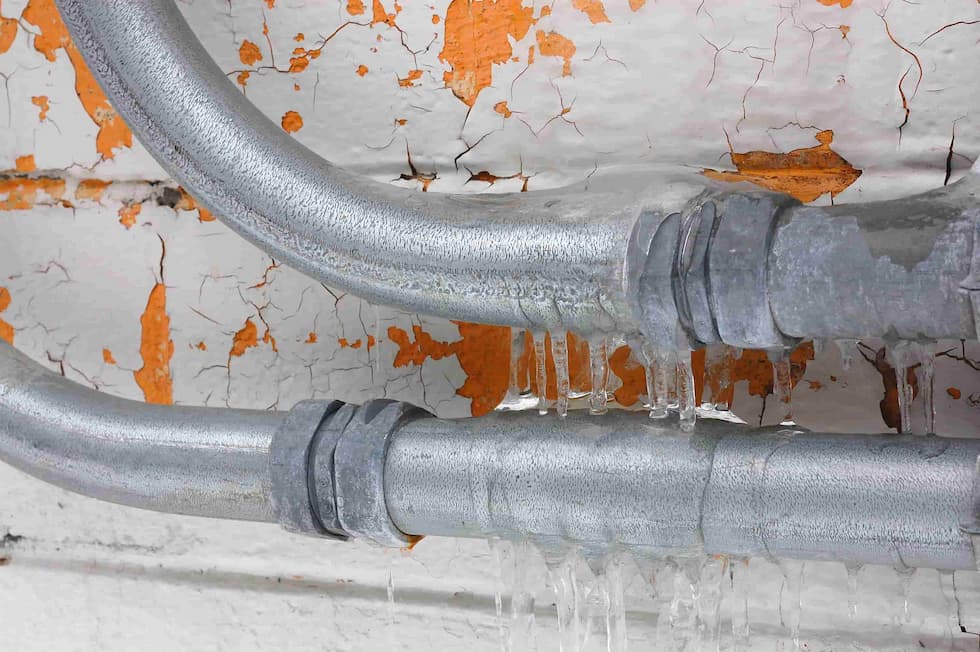
The Winter Storm Uri devastated Texas, leaving millions of people without electricity, heat and water for several days. The blackouts affected pump stations and caused low water pressure or outages in many areas of the state. Frozen pipes, sensors, filters and other components disrupted water treatment plants. Several cities urged residents to boil water before consumption. According to estimates, more than 10 percent of the approximately 7,000 different water systems statewide failed. In some places, generator failures at lift stations created sewage backups at homes.
As Texans take stock of the damage, water and wastewater utilities are asking one question: How can we prepare for a future event? In northern states like Illinois, where we live, utilities routinely prepare for winter storms as a matter of necessity. Many mitigation measures implemented are simple, practical and inexpensive. Some of the measures that Texas, or any state not as prepared for winter storms, can borrow from northern utilities include:
Find the Weakest Link
If a pressure transducer that senses the water level in a tank freezes, it can shut down the entire plant. When reviewing facilities, find the weakest link in the whole system and perform a risk assessment. For exposed small diameter lines, heat trace and insulate the pipe. Many northern treatment plants and pumping facilities use heat tracing to avoid freezing in the winter months. For exposed large-diameter pipes, insulate and keep water moving through it.
Alternate and Cycle Pumps
Most plants are designed with redundant pumps where a spare pump is called to run only if one of the other pumps is out of service. One of the operational changes that utilities can make prior to a projected cold snap is to cycle pumps on a set timed interval, alternating pumps after each run period to ensure warmer water is circulating through each pump and connected piping. The warm water flowing through the piping system will prevent freezing provided the cycle times are not too long.
Protect Backflow Preventers
A backflow preventer prevents non-potable water from entering the potable water supply and is an important component of a water supply system. In northern states, backflow preventers are placed in a small enclosure with a heater. During Uri, many backflow preventers froze, disrupting systems. Enclosing the backflow preventer with the space heater will provide a warm environment, even if the outside temperature is freezing.
Change the Tank Elevation
In northern states, ice accumulates inside water storage tanks. Ice can create structural damage, as well as damage to internal components, such as ladders, and cathodic protection systems, especially in elevated storage tanks. One way to combat the issue is through a mixing system that allows warmer water to circulate upward, thereby preventing the water at the top from freezing. Another way is to vary the water elevation in the tank. By keeping the water moving, operators can prevent the ice from solidifying on the surface.
Maintain Generators
One of the biggest issues during Uri was the failure of generators across the state. Generators can fail to start for many reasons, including faulty batteries, improperly configured breakers, defective block heaters, gelled diesel fuel, and empty fuel tanks. Utilities should maintain generators in tip-top shape, so they function properly, especially during an extended cold snap. Some basic cold weather preparation for generators includes checking that block heaters are functioning and adding anti-gel fuel additives. The U.S. Environmental Protection Agency (EPA) has developed several operation and maintenance tips on running and maintaining generators during such emergencies, including testing generators periodically, performing scheduled maintenance, ensuring availability of clean, reliable fuel, training staff on how to operate the generator safely etc. Read all the tips here.
Stay on the Critical Facilities List
In any system, there are facilities and pump stations that are critical and need to always stay in operation. Collaborate with your local power provider and sign contracts to ensure that your utility is on the critical facilities list. Doing so will help your utility get priority on generators and fuel resupply during emergencies.
Reboot SCADA
Any type of power surge, outage or blip can mess up a utilities’ SCADA system. Utilities should have the ability to reboot SCADA quickly. One option is to have a flash drive in the controller cabinet with the programming, so it can be quickly loaded. Another option is an extra PLC with the loaded program. The operator can just swap out the faulty unit with the spare and re-start the SCADA system. Also, utilities should have at least two operators who know how to implement these procedures.
Have a Checklist
Finally, a checklist is a great tool that utilities can use to prepare their systems. The EPA’s Extreme Cold and Winter Storms Incident Action Checklist, which provides detailed information on preparedness and response actions utilities can take in extreme cold and winter storms, is an especially useful tool. Utilities should develop checklists and provide regular operator training for cold weather and other emergencies or operational incidents. Conduct an incident debriefing, or after-action meeting/report, to document elements of the system that failed and the system components that were unphased during the event. From that assessment, the checklists can be updated to avoid similar failures. Additionally, conduct regular operator training on emergency operations. Having a knowledgeable and trained staff is one of the best ways to maintain system reliability.

